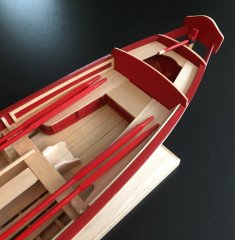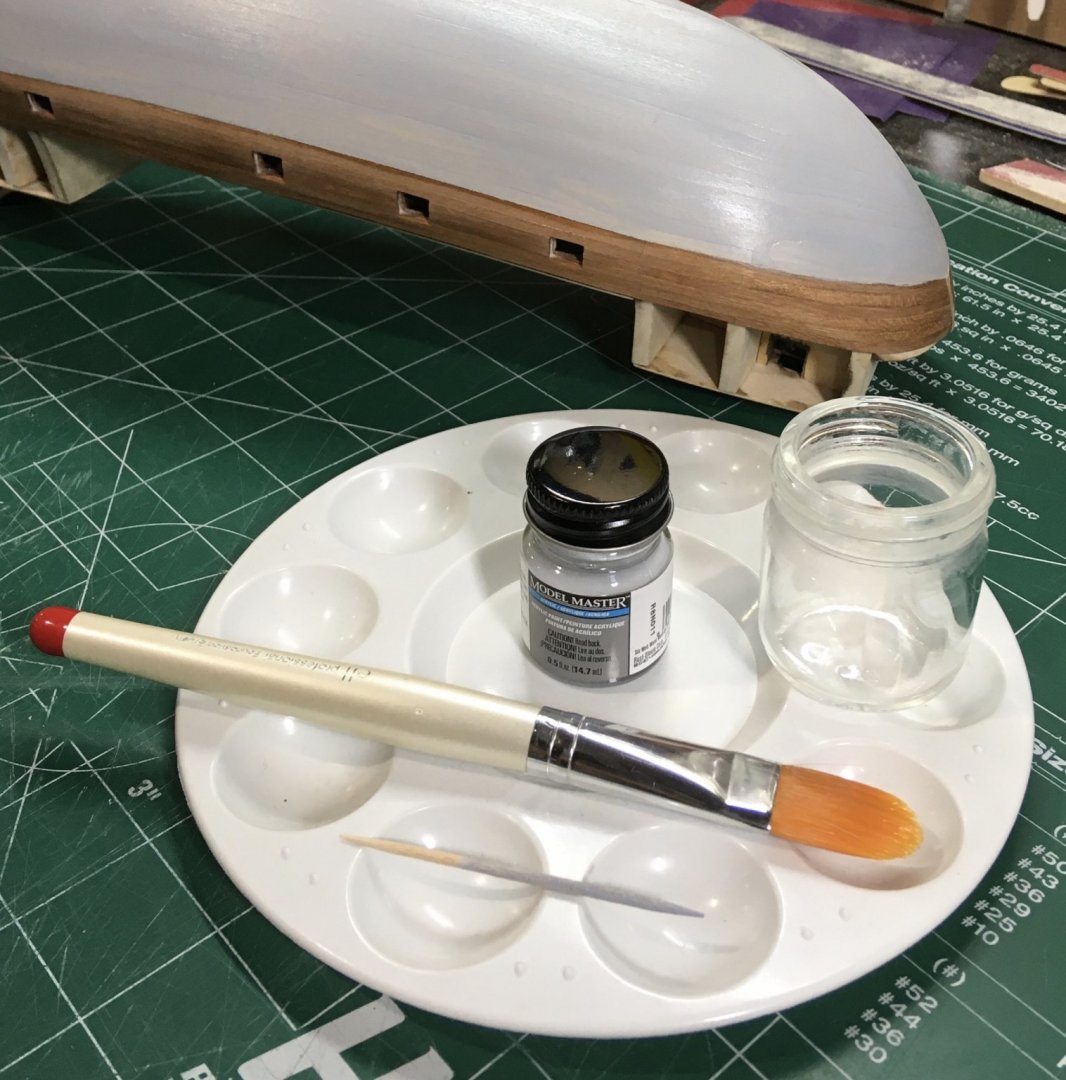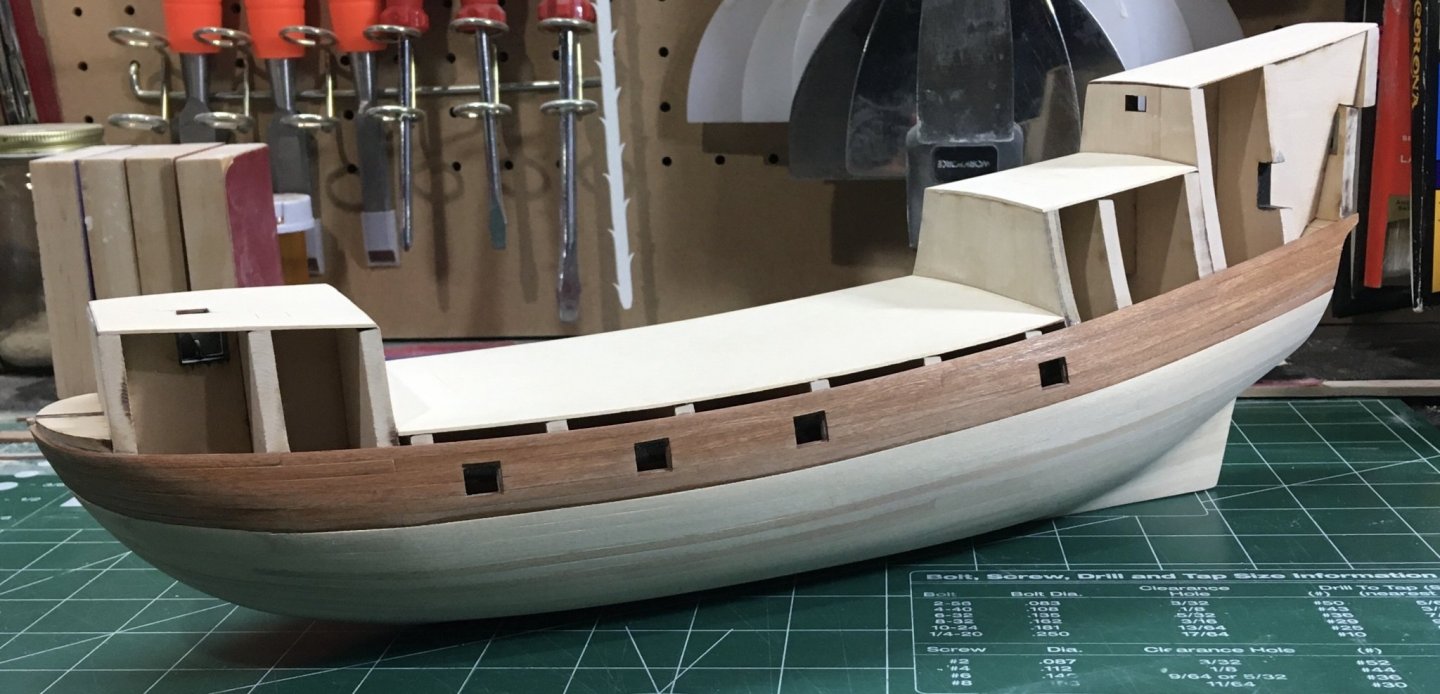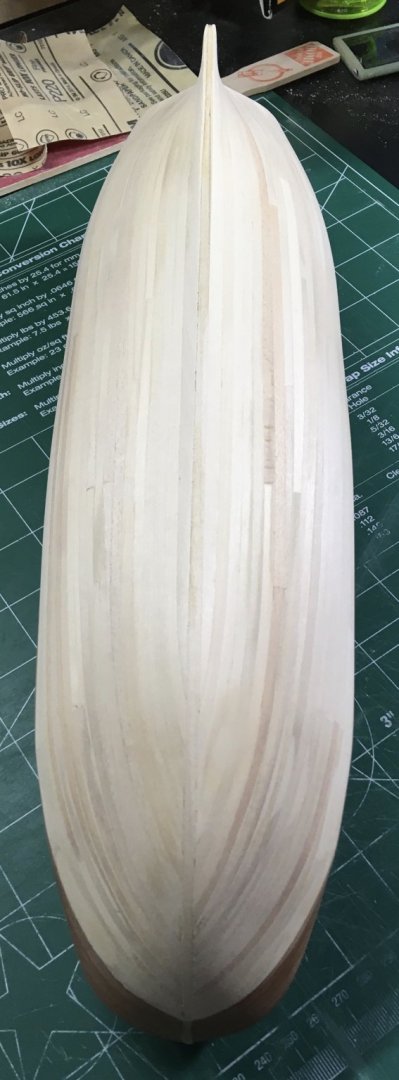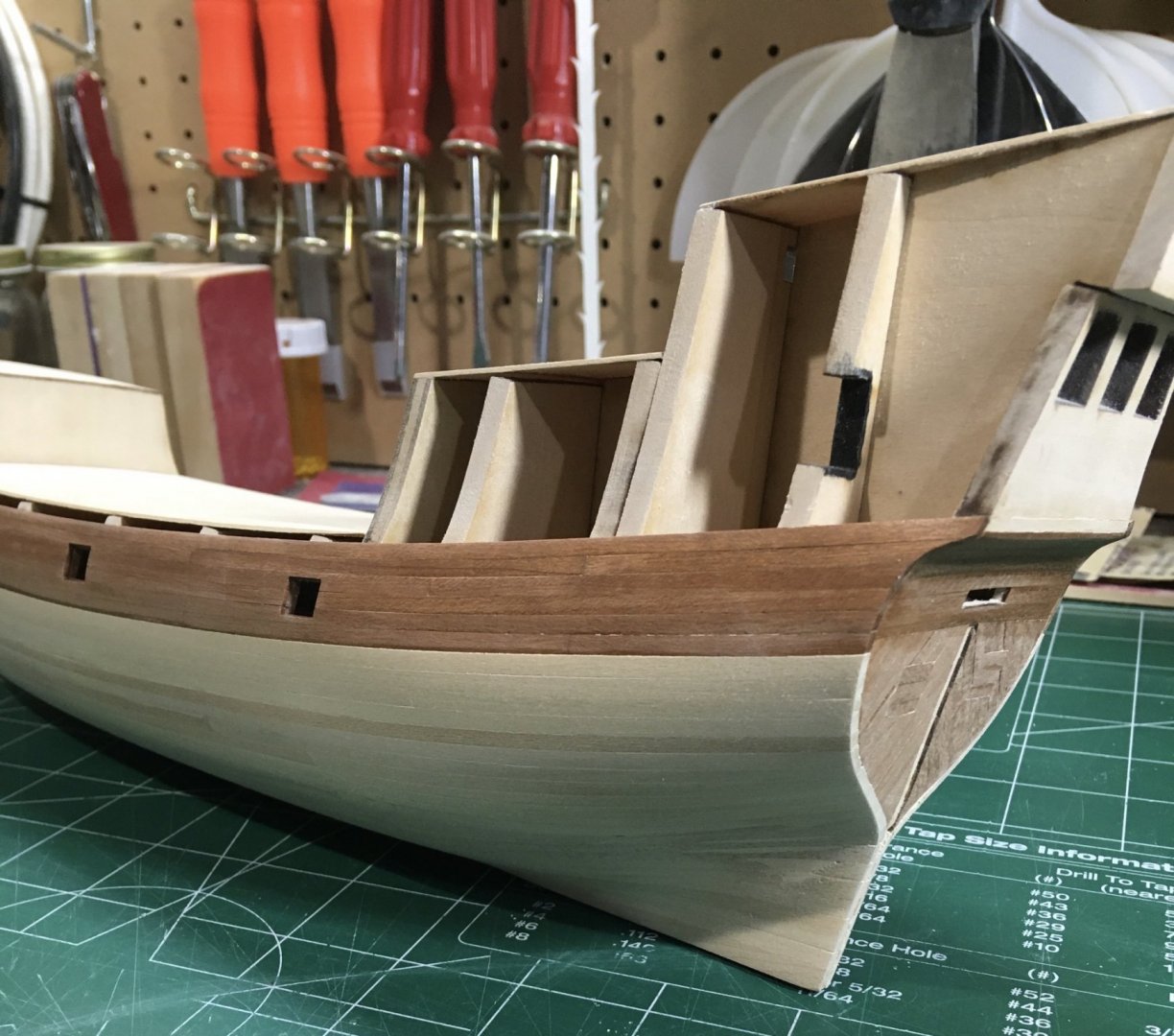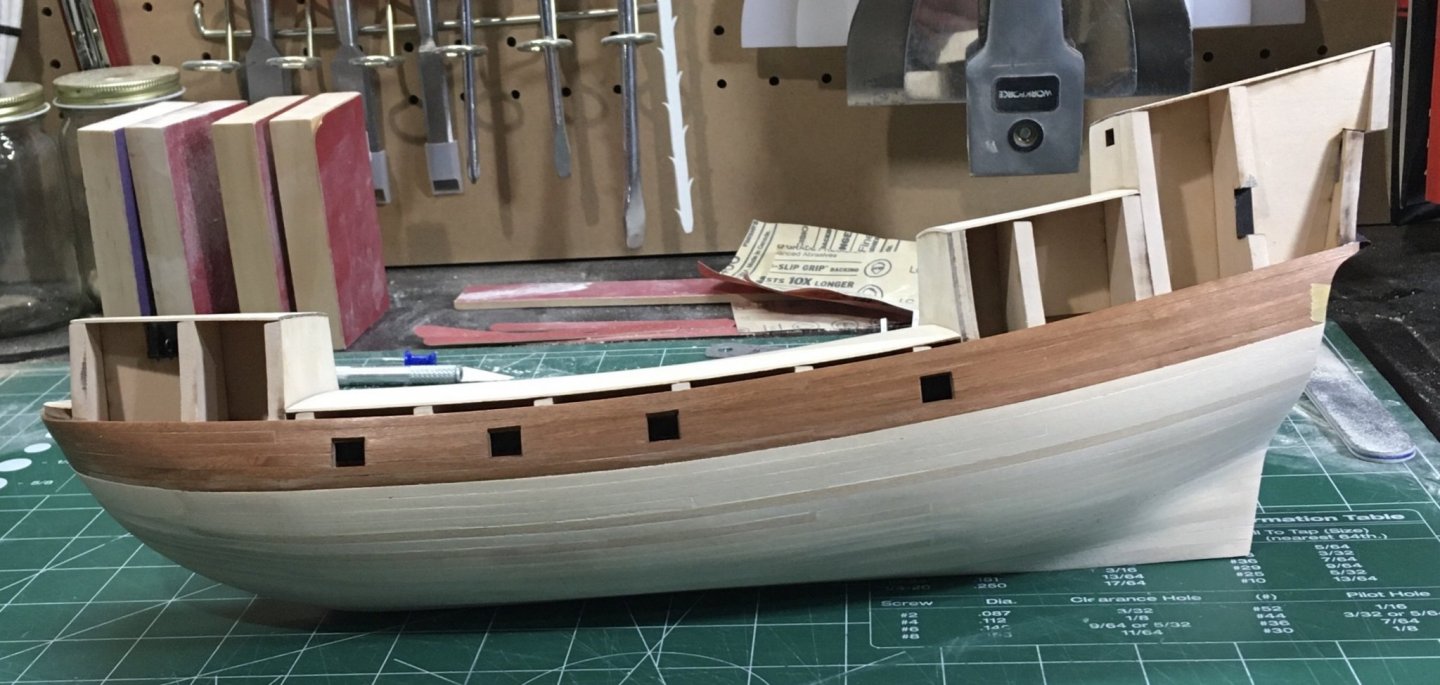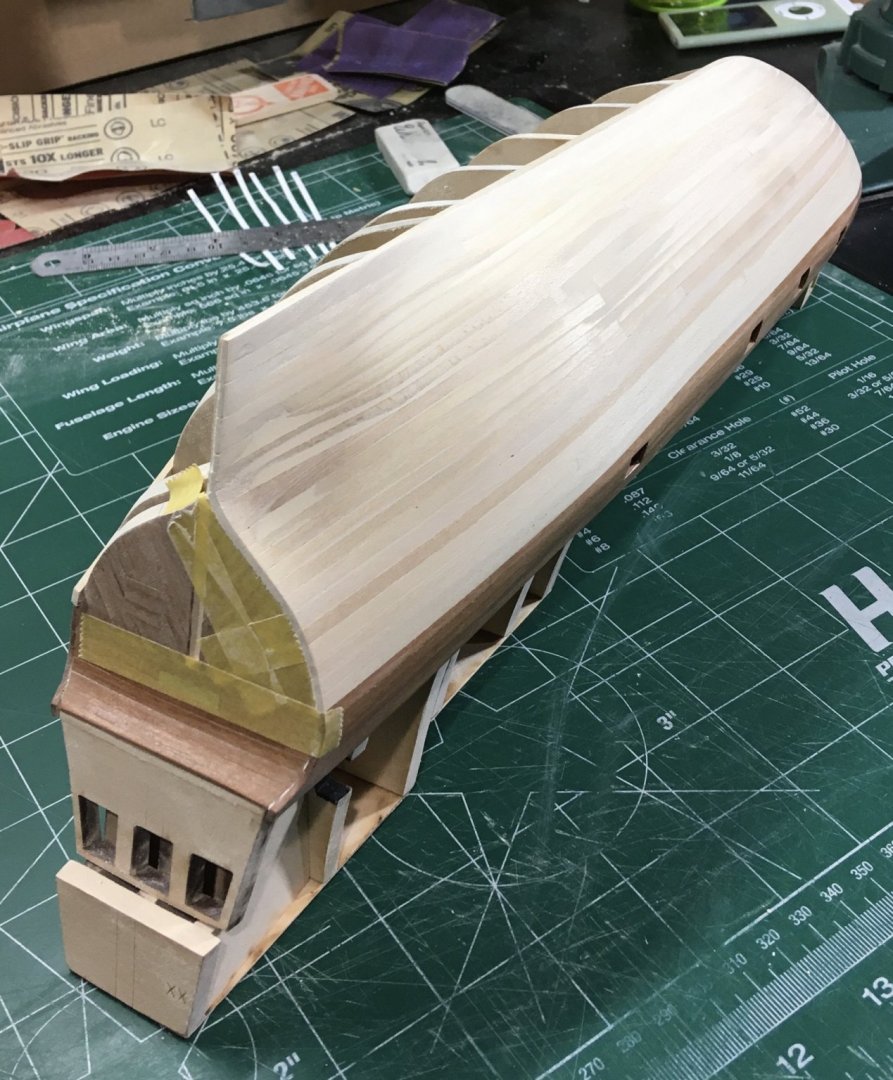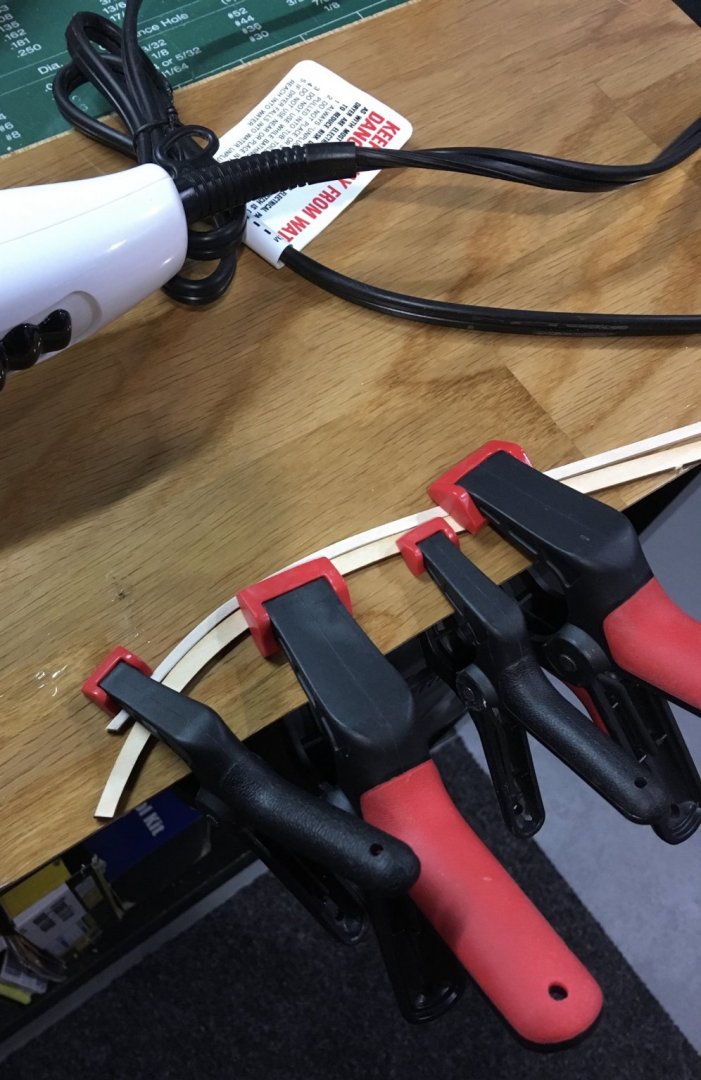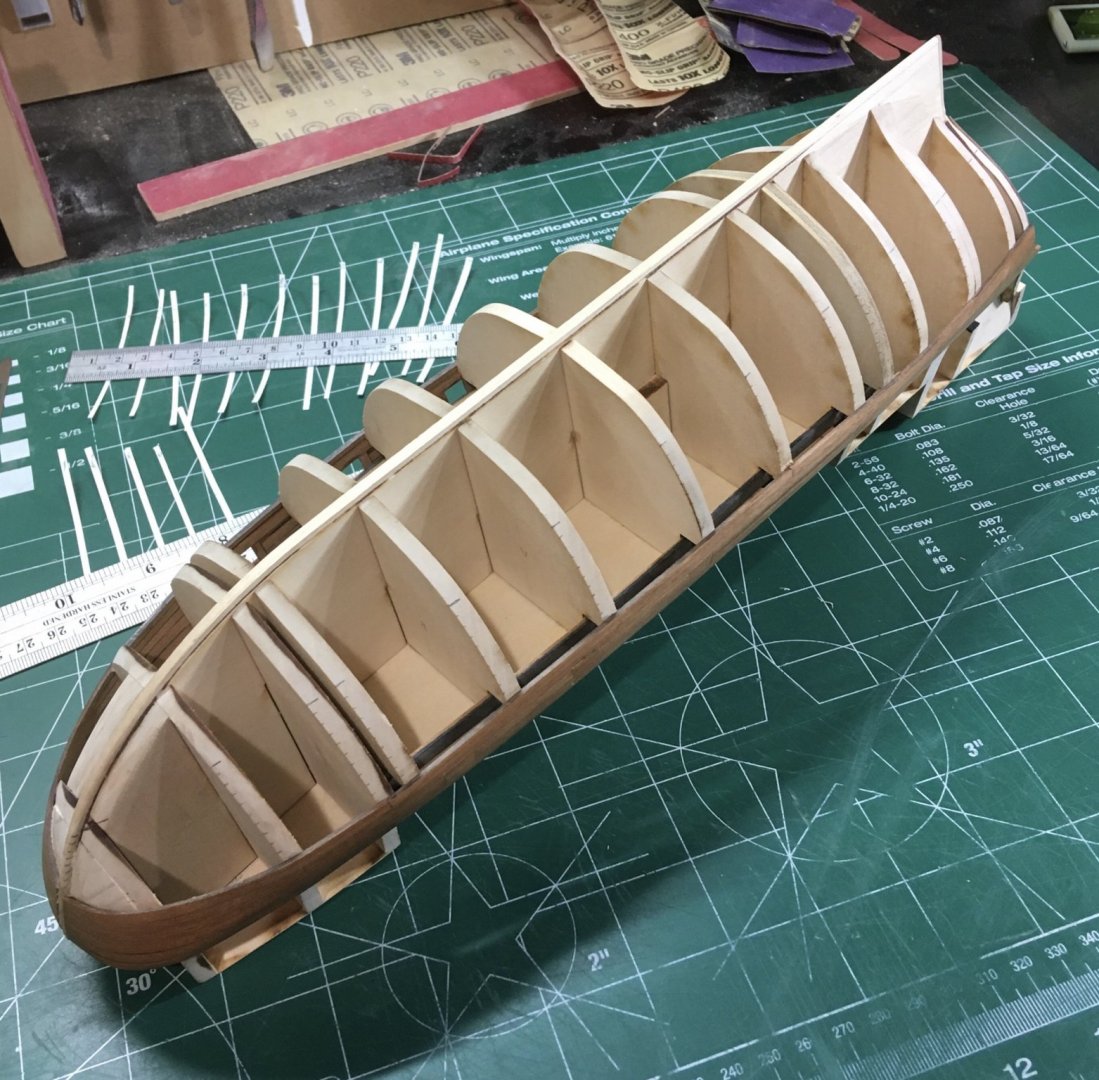-
Posts
1,327 -
Joined
-
Last visited
Content Type
Profiles
Forums
Gallery
Events
Everything posted by Tigersteve
-
Thank you for the kind words and the likes. I just applied one coat of gray water based primer using one of my wife’s old foundation makeup brushes. Very smooth bristles (works great for painting). I applied straight from the jar. This will allow me to see any areas that need filler and sanding. After further filling and sanding, I will reapply the primer and repeat until a completely smooth surface is achieved. After this, deck planking can begin. Steve
-
This part of the project is tricky. Yours is looking good. Steve
- 77 replies
-
- model shipways
- pinnace
-
(and 1 more)
Tagged with:
-
I had received my copy of volume 3 before the holidays. Now that I have the correct CD sent from the publisher, I’d like to say some things about the whole package. Even after a quick look at the content included in the book, CD, and the 13 drawings, I can easily say that it’s extensive, wow! What a great resource Ed has put together. It would have been a shame to not have the correct CD, which includes several additional materials. The build log PDFs and rigging checklist are just some of the cherries on top. It’s worth purchasing even if just to find out how Ed contained the massive amount of rigging content into this single volume. It is well done. Steve
- 3,618 replies
-
- young america
- clipper
-
(and 1 more)
Tagged with:
-
Hull planking is complete. Several days of sanding and filling. I used 100 grit through 400 grit. After primer is applied I will see how much more work is necessary to achieve a smooth hull. The stern needs more sanding. I will sand more in that area after the keel and stern post are attached. A tip for those building this vessel in future. Add filler blocks for the first three bulkheads. This will show you if you have the correct shape and help with fairing and planking. I did not fair enough in some areas. The shape at the bow is tricky. Mine still needs work. Steve
-
Careful with the sanding drum. May be better to use a sanding disc attachment. Easier to control. Steve
- 77 replies
-
- model shipways
- pinnace
-
(and 1 more)
Tagged with:
-
Just received my copy today. Looking forward to enjoying it. On first glance it looks well executed as expected. Steve
- 3,618 replies
-
- young america
- clipper
-
(and 1 more)
Tagged with:
-
Like your first version of painted shingles best v natural Steve
- 1,784 replies
-
- winchelsea
- Syren Ship Model Company
-
(and 1 more)
Tagged with:
-
Back to planking the remainder of the hull in basswood since this will be painted. Almost done with the first belt on the port side. I anticipate many rounds of sanding and filler. Not obsessing over this part of the planking, as I’m fairly sure I can get a nice surface for painting. A drop plank was created at the bow, which I may show in a later post. Nothing worth photographing at this point, but here’s a photo of some plank bending. Steve
-
I think I had about 10 as well. Marking the frames will help keep your symmetry and the cap rail will finish it off nicely. I planked from the keel up and ended up redoing the top two strakes. Steve
- 77 replies
-
- model shipways
- pinnace
-
(and 1 more)
Tagged with:
-
I had the name plate made at a trophy place. Very inexpensive. Steve
- 77 replies
-
- model shipways
- pinnace
-
(and 1 more)
Tagged with:
-
Thin brass tubes or rods are the way to go. I used 1/16”. Steve
- 77 replies
-
- model shipways
- pinnace
-
(and 1 more)
Tagged with:
-
Thanks! This was another challenging build, but I had a lot of fun modifying some of the features. Steve
- 77 replies
-
- model shipways
- pinnace
-
(and 1 more)
Tagged with:
-
Really nice work on the mini version. Looking forward to seeing the larger one come together. Steve
- 77 replies
-
- model shipways
- pinnace
-
(and 1 more)
Tagged with:
-
It’s looking excellent, Chuck. How is the learning curve with working with this wood? Specifically being able to avoid leaving dents since it’s very soft. Steve
- 1,784 replies
-
- winchelsea
- Syren Ship Model Company
-
(and 1 more)
Tagged with:
-
After messaging Chuck, I adjusted the planking band as there was too much taper. I took a different approach and marked ten planks on most bulkheads and adjusted the tape to a smooth curve. Chuck suggested adding a drop plank, which will result in one less plank terminating at the bow. I will follow this plan and also add a stealer at the stern. Although below the whales will be painted, I wanted to use this project to improve my planking technique. Steve
About us
Modelshipworld - Advancing Ship Modeling through Research
SSL Secured
Your security is important for us so this Website is SSL-Secured
NRG Mailing Address
Nautical Research Guild
237 South Lincoln Street
Westmont IL, 60559-1917
Model Ship World ® and the MSW logo are Registered Trademarks, and belong to the Nautical Research Guild (United States Patent and Trademark Office: No. 6,929,264 & No. 6,929,274, registered Dec. 20, 2022)
Helpful Links
About the NRG
If you enjoy building ship models that are historically accurate as well as beautiful, then The Nautical Research Guild (NRG) is just right for you.
The Guild is a non-profit educational organization whose mission is to “Advance Ship Modeling Through Research”. We provide support to our members in their efforts to raise the quality of their model ships.
The Nautical Research Guild has published our world-renowned quarterly magazine, The Nautical Research Journal, since 1955. The pages of the Journal are full of articles by accomplished ship modelers who show you how they create those exquisite details on their models, and by maritime historians who show you the correct details to build. The Journal is available in both print and digital editions. Go to the NRG web site (www.thenrg.org) to download a complimentary digital copy of the Journal. The NRG also publishes plan sets, books and compilations of back issues of the Journal and the former Ships in Scale and Model Ship Builder magazines.


